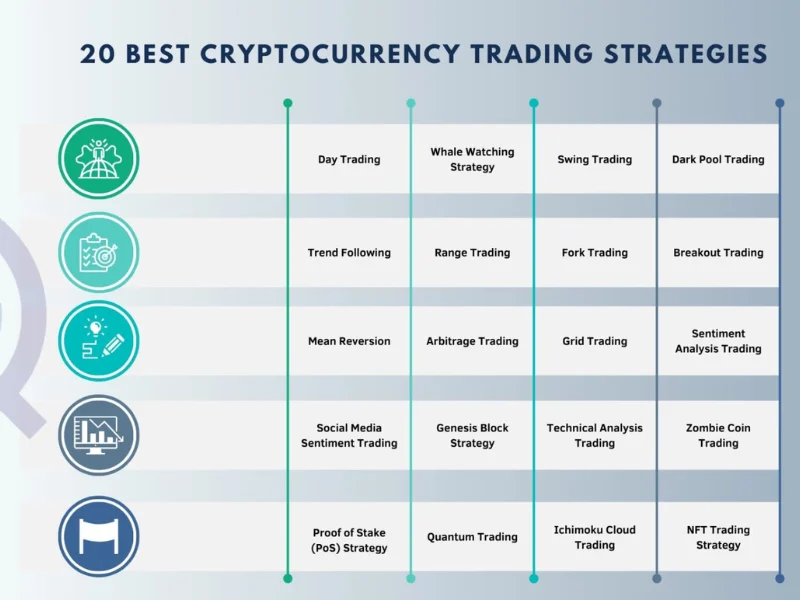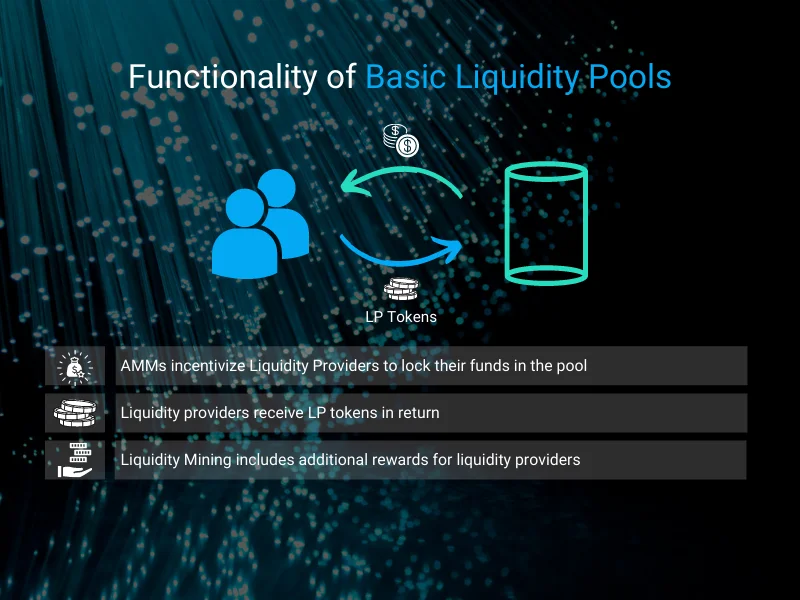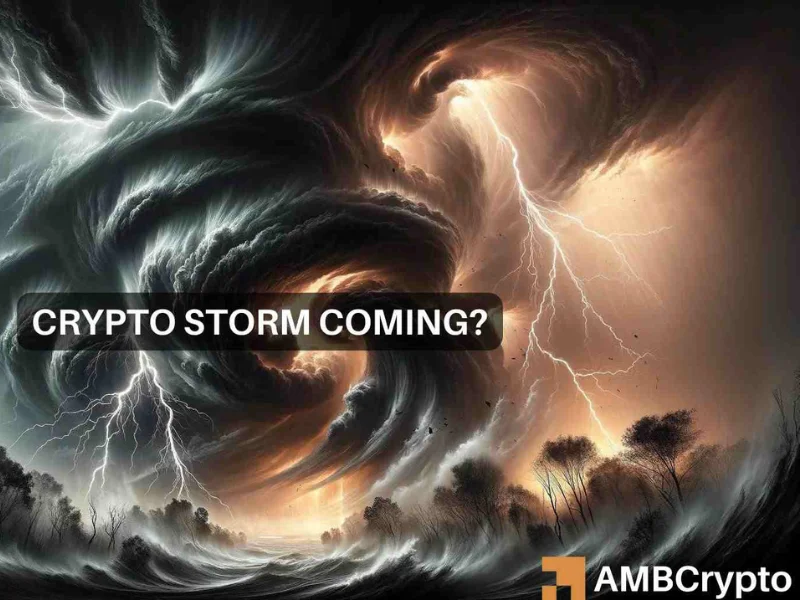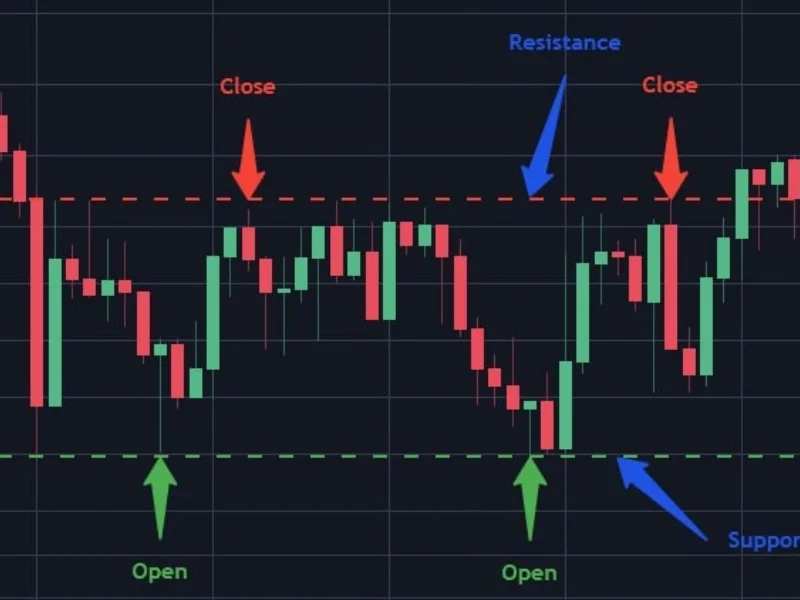1) Introduction
Purpose of this article.
This guide shows you how to use the Crypto Fear & Greed Index (FGI)—a simple, 0–100 gauge of market emotion—to make smarter trading and investment decisions. We’ll pair the index with real, up-to-the-minute market context, on-chain data, and macro/regulatory developments so retail beginners, active traders, and institutions can all put it to work immediately. The FGI’s core idea is straightforward: extreme fear can signal opportunity; extreme greed can signal risk. Alternative.me
Why staying updated matters.
Top Crypto moves at the speed of news and code. In the past week alone, macro remarks from the U.S. Federal Reserve shifted market pricing and sentiment—Bitcoin spiked, then swiftly retraced as liquidity thinned and a large seller hit the tape. That whipsaw illustrates why traders should anchor decisions in fresh data, not vibes. We’ll rely throughout on trusted sources like CoinDesk (market/tech/policy reporting), Glassnode (on-chain analytics), and Bloomberg Crypto (macro/market context). CoinDesk+1
What you’ll learn.
We’ll cover global market movements, the tech that’s reshaping costs and throughput, the evolving regulatory map, adoption trends, on-chain activity, liquidity, and macro drivers. We’ll tie each back to practical FGI tactics—entries, exits, sizing, and risk controls—so you can translate sentiment into action.
2) Global Market Trends
Current market performance & capitalization
As of today (Aug 26, 2025), the total crypto market cap is hovering in the high $3.8T range (CoinMarketCap) and $3.87–$3.88T (CoinGecko), with BTC dominance ~56–58% and ETH dominance ~14%. Short-term momentum is mixed after a weekend “flash crash” erased a dovish-Fed pop. CoinMarketCapCoinGecko+1Barron’s
For quick orientation, here are live charts of the two bellwethers:
Bitcoin (BTC)
$109,955.00
-$1,789.00(-1.60%)Today
1D5D1M6MYTD1Y5Ymax
Ethereum (ETH)
$4,458.11
-$191.74(-4.12%)Today
1D5D1M6MYTD1Y5Ymax
24h / 7d: Over the last 24 hours, broad-market cap dipped ~1–2% with heavier declines across many large alts; on the week BTC is off a few percent as the market reprices the rate-cut path and digests weekend liquidations. CoinMarketCapCoinGeckoThe Economic Times
Drivers: Friday’s rally on Jackson Hole commentary gave way to a Sunday flush attributed to whale selling, thin weekend liquidity, and profit-taking around fresh ETH highs. InvestorsBarron’s
Institutional involvement & economic influence
Institutional flows have turned choppy in August. The latest CoinShares report logged $1.43B in weekly outflows from digital asset ETPs—the largest since March—suggesting tactical de-risking into macro uncertainty. Still, Ethereum products showed relative resilience and year-to-date flows remain positive for several issuers. CoinShares
Meanwhile, corporate treasuries continue to influence narrative and beta. MicroStrategy (now often referenced as “Strategy Inc.” in some reports) recently disclosed additional BTC purchases, pushing holdings above 630k BTC, underscoring ongoing institutional conviction even through pullbacks. (Independent trackers show ~629k–632k BTC depending on reporting date.) Bitcoin TreasuriesCointelegraph
Macro remains the swing factor: traders are handicapping the Fed’s rate-cut cadence, and markets have shown oversized sensitivity to Powell’s remarks. Dovish hints can goose risk assets; subsequent liquidity gaps and positioning can just as quickly reverse them. CoinDesk+1
3) Technological Developments and Innovations
Blockchain advancements
Two Ethereum upgrades materially shaped the landscape:
- Dencun (Mar 2024) introduced proto-danksharding (EIP-4844), creating cheaper data “blobs” for L2s and slashing their data costs—a structural fee decline for users of rollups like Arbitrum, Base, Polygon, and Starknet. CoinDesk+1
- Pectra (May 7, 2025) enhanced wallet UX and staking operations (a major quality-of-life lift for validators and users), continuing the rollup-centric roadmap. Institutional research (CME x Glassnode) tracks the downstream effects on staking, issuance, and derivatives. CoinDeskHubSpot
On Solana, the Firedancer client (by Jump) continued testing in 2025, aiming to vastly increase throughput and resilience via a second independent validator client—key for performance and client diversity. CoinDesk
Security enhancements in crypto
Security is improving across the stack:
- Zero-knowledge proofs (e.g., zkEVM rollups like Scroll) are maturing, offering high-throughput verification while preserving Ethereum’s security. Nansen Research
- On-chain risk signals (e.g., exchange reserve trends from CryptoQuant) are increasingly used by traders to gauge latent sell pressure and liquidity conditions. Recent data show multi-year lows in BTC held on exchanges, in part offset by ETF custody growth—a structural shift in where circulating supply sits. CryptoquantAInvest
- Protocol-level risk is better surfaced: DeFiLlama tracks TVL and maintains a live hacks dashboard to quantify losses by category, helping investors assess venue risk. DeFi Llama+1
Impact of smart contracts and dApps
Smart contracts underpin DeFi, RWAs, and consumer apps. Messari’s 2025 theses highlight growth in DePIN, RWAs, Solana’s rise, and app-layer UX; Dune community dashboards provide live dApp usage metrics across chains and protocols (e.g., Uniswap v4 trackers). Together, these sources make it easier to separate narrative from usage. MessariDuneThe Cryptonomist
4) Regulatory and Legal Landscape
Current regulatory updates
- U.S.: The balance has shifted in 2025. Courts pressed the SEC to better justify its rulemaking posture (Coinbase petition), and major enforcement cases moved or were withdrawn—a sign of changing regulatory strategy. Markets read these developments as modestly constructive for clarity. Justia LawReuters
- EU / MiCA: MiCA entered application in stages from 2024 into 2025, with debates over refinements continuing as the ECB and Commission weigh competitiveness and U.S. policy shifts. ESMACoinDesk
- UK / FCA: The financial promotions regime remains strict; the FCA has stepped up enforcement and data transparency. (Broader access to crypto ETNs for retail has been signaled for later 2025, reflecting ongoing calibration of risk safeguards.) FCA+1MoneyWeek
Legal cases & precedents
- Binance: U.S. litigation posture changed in 2025, with reports the SEC voluntarily dismissed its civil suit—one illustration of the evolving U.S. approach. (Context: Binance previously paid a $4.3B DOJ/CFTC settlement in 2023.) Reuters+1
- Coinbase: Multiple court actions (Third Circuit and SDNY interlocutory posture) continue to shape how Howey might apply to digital assets, setting important guardrails for token classifications. Justia LawKatten


5) Adoption and Market Sentiment
Retail and institutional adoption
Q2 2025 saw a strong rebound in market cap and activity, per CoinGecko’s quarterly report, even as volumes rotated across venues and categories. Institutions continue to use ETPs/ETFs, while retail adoption pulses through L2s, exchanges, and wallets. CoinGecko
The role of social media & influencers
Sentiment can swing around macro headlines. Santiment tracks social chatter surges—e.g., rate-cut speculation spikes are often caution flags. Pairing social-trend spikes with FGI readings can improve timing by highlighting crowded narratives. santiment.netCointelegraph
6) On-Chain and Blockchain Activity
Tracking on-chain activity
Core metrics—active addresses, transaction volumes, realized price, MVRV—reveal trend health. Glassnode dashboards (BTC and ETH) let you validate whether rallies are accompanied by broad address activity or just speculative churn. Glassnode Studio+1
Exchange-reserve trends (CryptoQuant) help gauge latent sell pressure: declining reserves can dampen immediate supply on centralized venues, though some of that supply has simply migrated to ETF custodians, changing microstructure more than fundamentals. CryptoquantAInvest
Liquidity and market movements
Liquidity fragments across venues and pairs. Kaiko shows altcoins suffer steeper liquidity drawdowns during stress than BTC, while ETH’s order-book depth has improved into mid-2025. Understanding depth helps size trades and set slippage-aware stops. Kaiko Research+1
7) Emerging Trends and Future Outlook
NFTs
NFT activity has consolidated onto a handful of chains and verticals (gaming, collectibles, IP). Policy voices like Coin Center emphasize protecting open-network innovation while policymakers iron out consumer-protection rules, taxation, and IP interpretations—key for the next NFT cycle. Coin Center
DeFi’s continued evolution
DeFi remains an innovation engine: newer perps venues, AMM upgrades (e.g., Uniswap v4), and L2-native ecosystems are growing. DeFiLlama shows TVL stabilized in 2025 near the mid-$100B range, while the hacks dashboard offers a reality check on protocol risk. DeFi Llama+1
Stablecoins and CBDCs
BIS’s 2024/25 surveys show >90% of central banks exploring CBDCs, with wholesale pilots further along; the IMF tracks stablecoin flows (2024 flows ≈ $2T analyzed) and publishes CBDC implementation guidance. Expect ongoing experimentation with cross-border CBDC pilots (e.g., India) even as some central bankers’ enthusiasm cools. Bank for International SettlementsIMF+1The Times of IndiaFinancial Times
8) Investor Insights and Sentiment Analysis
Investor behavior patterns
Nansen and Santiment combine flow-of-funds and social data to map whale accumulation/distribution, token unlocks, and social FOMO/FUD cycles. Their reports are useful companions to the FGI: when FGI pushes to extreme greed at the same time whales reduce exposure and social sentiment spikes, expect elevated drawdown risk. NansenSanbase
Risk management in Top Crypto investments
Messari’s research stresses fundamentals and discipline: position sizing by liquidity, risk caps by volatility, and hedging when sentiment outruns adoption. Combining FGI with on-chain and liquidity dashboards creates a resilient multi-signal process. Messari
9) Case Studies and Market Examples
Bitcoin halving events & price impact
The fourth halving (Apr 20, 2024, block 840,000) cut issuance to 3.125 BTC per block. Historically, halvings coincide with bullish phases, but effects vary across cycles and interact with macro and liquidity. 2025 performance has been choppier than prior cycles—a reminder that demand and policy matter as much as supply. CoinDeskInvestopediaMarketWatch
Ethereum’s 2024–2025 transition (Dencun → Pectra)
Post-Dencun, L2 fees compressed dramatically; Pectra improved UX and staking mechanics. Glassnode’s H1-2025 report details validators, issuance, and derivatives structure—useful for mapping ETH’s evolving “digital economy” thesis. CoinDesk+1HubSpot
10) Impact of Global Events on Top Crypto
Economic factors driving adoption
Top Crypto is sensitive to rates, liquidity, and the dollar. Recent market action around Jackson Hole shows how macro expectations ripple into crypto beta and ETF flows; institutions tactically adjust exposure via ETPs as conditions change. Kaiko adds that alt liquidity compresses faster than BTC during stress. CoinDeskBarron’sKaiko Research
Geopolitics and shocks
Regime shifts (trade, sanctions, capital flows) can alter stablecoin usage and risk premiums. Reuters and Bloomberg coverage throughout 2025 has highlighted how policy pivots and enforcement stance changes in the U.S. and elsewhere affect both sentiment and allocation. BloombergReuters
11) Key Insights from Industry Experts
- CoinDesk analysts frame near-term crypto as a macro-linked risk asset with structural tailwinds from ETFs and corporate adoption, but with elevated event risk. CoinDesk
- Bloomberg Crypto highlights positioning shifts and option pricing around policy events like Jackson Hole. Bloomberg
- Messari (2025 theses) flags DePIN, RWAs, Solana’s resurgence, and application-layer UX as growth engines—useful for thematic allocation beyond the majors. Messari
12) How to Use the Fear & Greed Index (FGI) for Better Trades
What it is.
The FGI compresses inputs (volatility, market momentum, social data, surveys, dominance, trends) into a 0–100 scale. 0–24 = extreme fear, 25–49 = fear/neutral, 50–74 = greed, 75–100 = extreme greed. It’s not a crystal ball; it’s a behavioral compass. Alternative.me
Core playbook.
- Mean-reversion edges at extremes
- Extreme Fear (<25): Consider scaling into high-quality assets (BTC, ETH) with staggered limit orders, especially if on-chain participation and liquidity remain healthy.
- Extreme Greed (>75): Tighten stops, reduce leverage, trim positions into strength, and/or hedge (options, inverse/perp exposure).
These edges improve when confirmation exists: rising active addresses (Glassnode), improving depth (Kaiko), and calmer funding. Glassnode StudioKaiko Research
- Extreme Fear (<25): Consider scaling into high-quality assets (BTC, ETH) with staggered limit orders, especially if on-chain participation and liquidity remain healthy.
- Regime filter
Overlay the FGI with a simple regime definition—e.g., price above/below 200-day MA and funding positive/negative. Greed in a confirmed uptrend often resolves as momentum continuation; greed in a downtrend is more often distribution. - Event overlay
Re-weigh risk around macro and policy catalysts (FOMC, Jackson Hole speeches, ETF approvals, major regulatory actions). If FGI is high and a known catalyst looms, lighten up; if FGI is depressed and catalysts are clearing, lean in selectively. CoinDesk - Position sizing & liquidity
Use Kaiko depth and venue liquidity to set maximum clip size per order. In thin alts, a greedy FGI can coincide with evaporating depth—a recipe for slippage. Kaiko Research - Portfolio mix
When FGI rises into greed and BTC dominance climbs, keep alt exposure conservative; when greed cools and breadth/TVL improve, you can rotate to selective L2s/DeFi. Validate with CoinGecko/CoinMarketCap dominance and DeFiLlama TVL. CoinMarketCapCoinGeckoDeFi Llama - Documentation & iteration
Track your trades versus FGI bands; assess hit rates by regime and catalyst type. Over time you’ll learn which extremes are worth acting on and which are head-fakes.
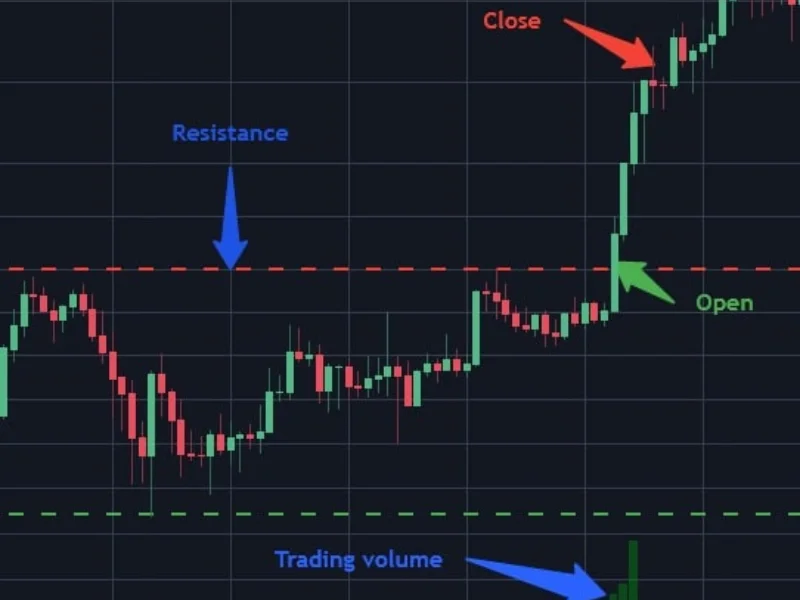

13) Conclusion
Takeaways.
- The FGI is most powerful when paired with on-chain confirmation (Glassnode), flow/venue context (CoinShares, Kaiko), macro awareness (Bloomberg/CoinDesk), and regulatory timing (MiCA/FCA/SEC headlines).
- Tech progress (Ethereum Dencun → Pectra, Solana Firedancer) continues to reduce costs and expand throughput, strengthening long-run fundamentals even as short-run sentiment whipsaws. CoinDesk+2CoinDesk+2
Call to action.
Bookmark your dashboards (FGI, on-chain, liquidity, ETF flows) and commit to a weekly routine: read CoinDesk/Bloomberg Top Crypto for catalysts, scan Glassnode/CryptoQuant for chain health, review CoinShares flows for institutional appetite, and sanity-check depth on Kaiko. Then, let the FGI guide your entry/exit discipline—not dictate it. CoinSharesGlassnode StudioCryptoquant
FAQs (10)
- What exactly feeds into the Crypto Fear & Greed Index?
Methodologies vary, but common inputs include volatility, momentum, social media sentiment, surveys, dominance, and trend. Alternative.me’s version maps them into 0–100 with extreme fear/greed bands. Alternative.me - How often should I check the FGI?
Daily is fine for traders; weekly for investors. The key is to pair it with on-chain and liquidity context so you don’t overreact to one-day spikes. Glassnode StudioKaiko Research - Does extreme fear always mean “buy”?
No—but historically it has improved odds for mean-reversion entries when other signals align (healthy address activity, constructive funding, supportive macro). Treat it as setup, not certainty. Glassnode Studio - How do I size positions when FGI is in extreme greed?
Reduce leverage, tighten stops, and consider partial profit-taking—especially in thin alts where liquidity can vanish quickly. Use Kaiko depth to cap order size. Kaiko Research - What triggers can invalidate an FGI signal?
Major macro surprises (central-bank policy), regulatory shocks, or security incidents (large DeFi exploits) can overwhelm sentiment setups. Watch policy calendars and DeFiLlama’s hacks feed. CoinDeskDeFi Llama - How did the 2024 Bitcoin halving affect sentiment?
It reinforced the scarcity narrative, but 2025’s price path shows macro/liquidity often dominate. Don’t trade halving lore in isolation—use FGI + flows + macro. CoinDeskMarketWatch - What’s the best way to track adoption?
Combine CoinGecko/CoinMarketCap for market share, Glassnode/CryptoQuant for on-chain usage, CoinShares for ETP flows, and Dune dashboards for dApp activity. CoinMarketCapCoinGeckoGlassnode StudioCoinSharesDune - Are stablecoins and CBDCs competition or complements?
Both. Stablecoins are core Top Crypto rails; CBDCs are sovereign experiments advancing in pilots. Expect coexistence and interoperability pilots before any “winner.” Bank for International Settlements+1 - Do ETFs/ETPs change how I use the FGI?
They change flow paths (more supply sits in ETF custody), which can mute exchange-reserve signals. Still use FGI, but interpret reserve declines alongside ETF flow data. CryptoquantAInvest - What’s a simple FGI trading checklist?
(a) FGI band (fear/greed) → (b) on-chain breadth (active addresses) → (c) order-book depth/slippage → (d) macro calendar/regulatory watch → (e) position size/hedge rules. Execute only if ≥3 of 5 align. Glassnode StudioKaiko ResearchCoinDesk


